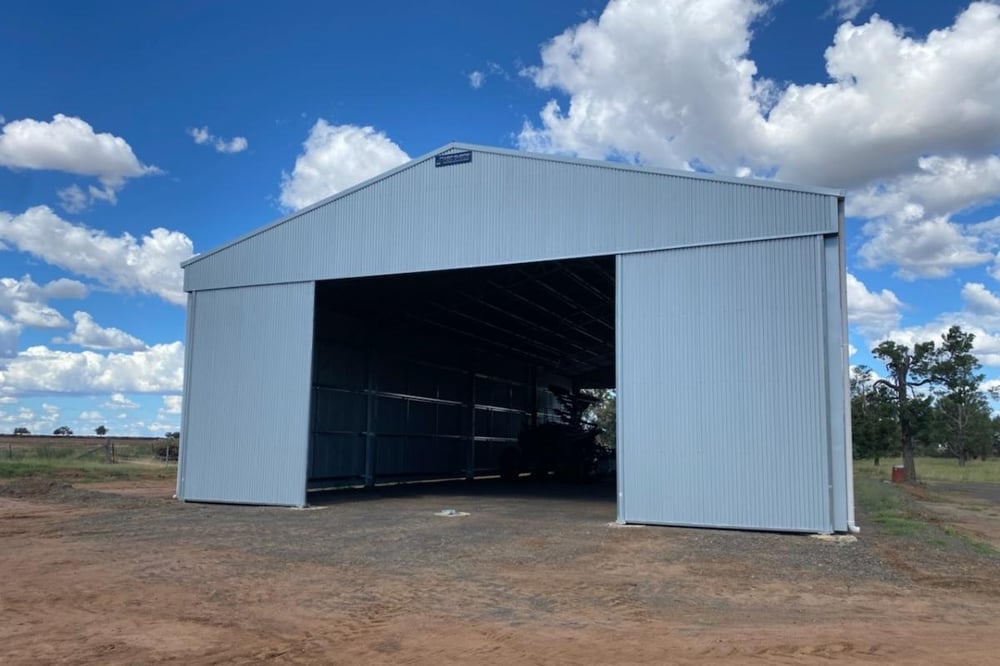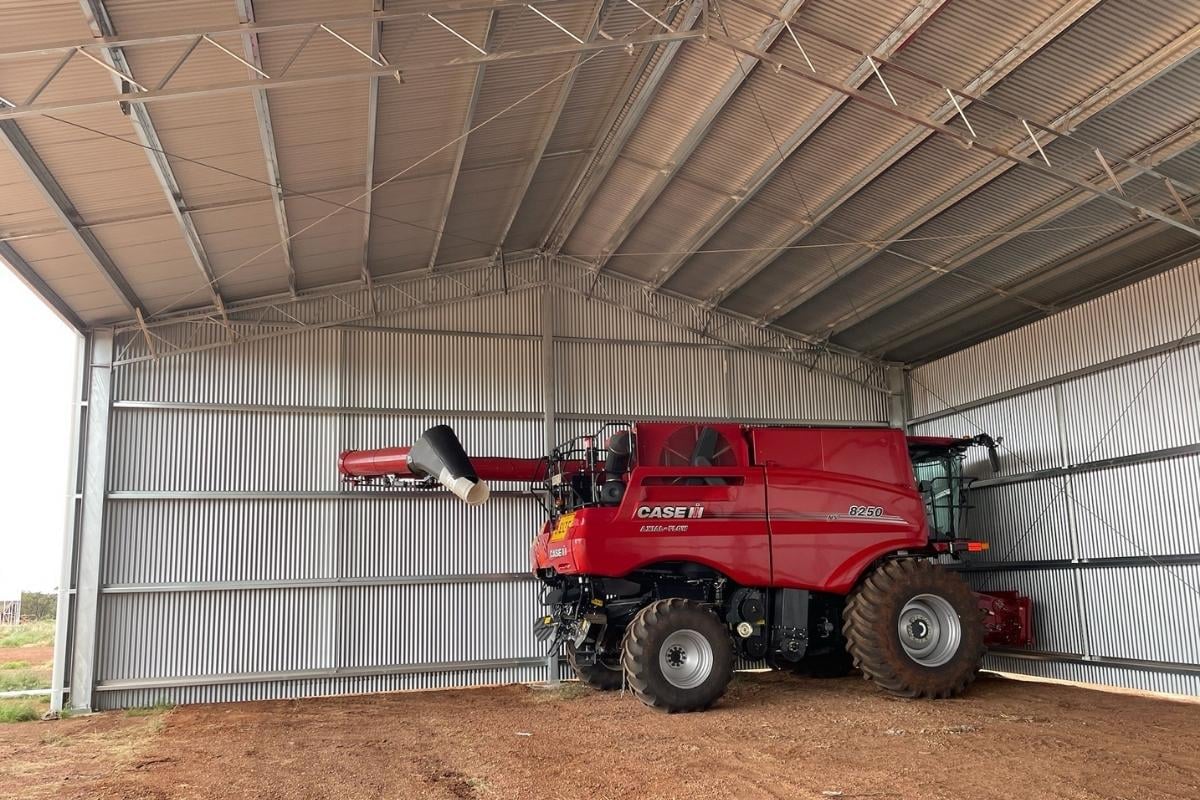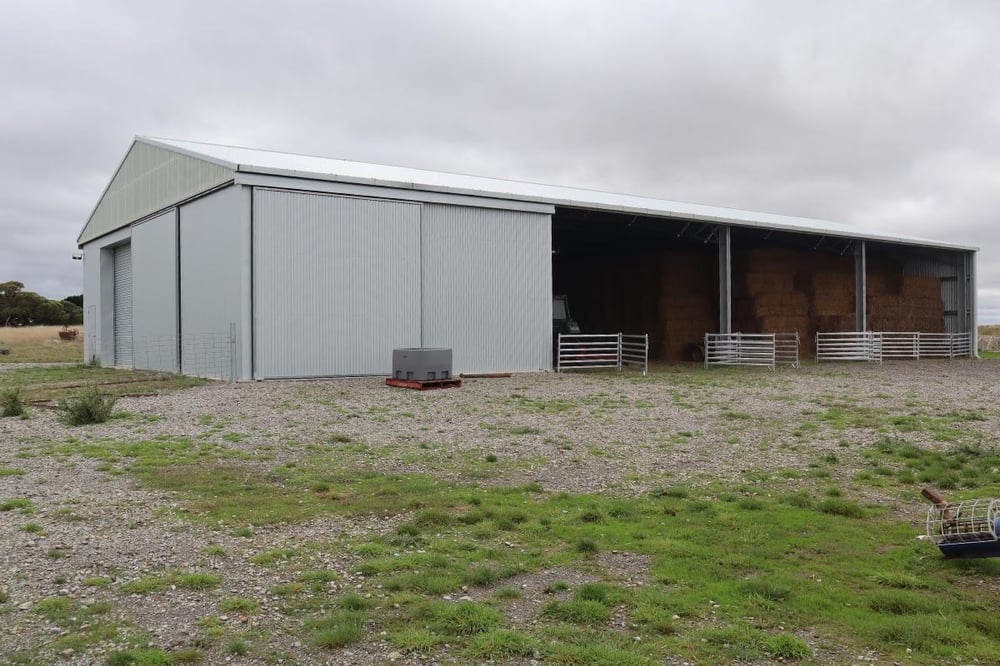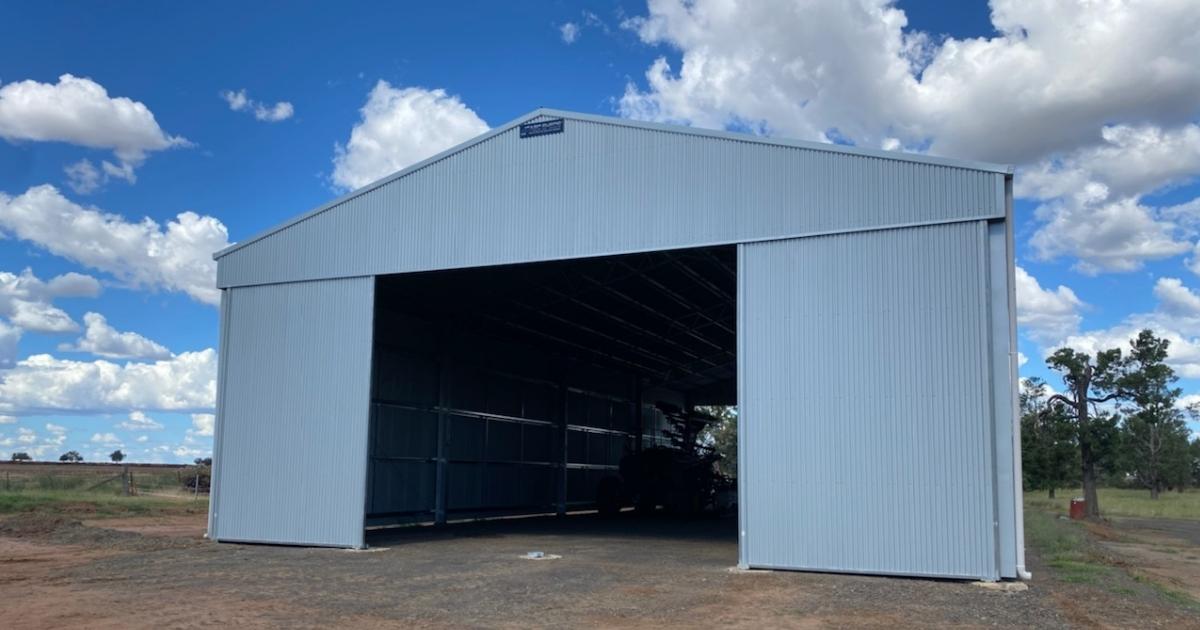What’s the most economical shed height?

Choosing the right height for a farm shed or industrial building is a critical decision, and can be quite daunting if you’re building a shed for the first time. Once a shed is built, it’s very difficult to adjust the height to suit your needs, so getting it right at the design stage is imperative. You’ll need to consider not only the shed’s purpose but also accessibility, storage capacity, local restrictions and more before finalising your shed plans. That’s why we’ve written this blog to give you a helpful guide to choosing a shed height that suits your needs. Learn more about choosing the most appropriate height for your future shed or industrial building.
Consider the purpose of the shed
The first thing to consider when designing a shed is its purpose, so what it will be used for. Each shed design offers unique features that will suit different industries, so you’ll need to define exactly what function your shed will need to serve. You might need the shed for machinery or vehicle storage, processing or manufacturing, warehousing, farming or animal shelter. Once you’ve narrowed down the exact purpose of your shed, you can start to decide how it should look and function.
Efficient shed design
The next thing to think about is how practical and efficient the shed’s height is for your purposes. This means designing the shed with function as a priority, and ensuring it will meet all your needs in the most efficient way not just now, but in the future too. If your shed is the right height, you won’t need to be concerned about any large equipment, storage capacity or accessibility on a day-to-day basis. It’s better to design the shed carefully with a clear set of requirements at this stage than to adjust your processes to suit after it’s built.
Accommodating machinery and vehicles
If your shed is going to be used to store vehicles or machinery, you’ll need to ensure there is plenty of clearance for everything to fit safely, without hitting the roof or the trusses, if you are accessing from a gable end. Manoeuvring machinery into small spaces can be a challenge, so ensuring there’s enough space for everything to be moved and parked is essential. Choosing the height of the shed is especially important because it will determine if your taller machinery can fit securely inside.
If you will have a trussover in your shed to get a wider opening, make sure you take into account the depth of the trussover as it will reduce the height of your opening.
If you're considering a gantry crane for something like a commercial shed or workshop, then you'll also need to think about shed height and in particular, the maximum hook height required for your operations. Once you know how high the hook height needs to be, and the clearances needed to accommodate this, you can decide the overall shed height accordingly.

The height of this shed not only accommodates current machinery, but it's tall enough to store larger machinery, should the need arise.
Door height and accessibility
It’s important to remember that the interior shed height is only one part of the story, you’ll also need to consider the door height too. Accessibility to your shed is critical, especially when you need to regularly move things in and out – the height of your shed means nothing if the shed entrance doesn’t allow you to move machinery inside!
To start with, calculate the height of your tallest machinery, and then ensure the entrance will be taller than this. For most cropping or farming operations, this will be a minimum of six metres so that there is enough clearance for machinery like air seeders and forklifts. And if you will be installing sliding or roller doors, then you will need to allow for an additional ~500mm to your clearance height, to allow for the sliding door beam or roller door drum.

Sliding doors are an important feature for many farm sheds, however an additional ~500mm needs to be allowed for clearance height.
Awnings
Awnings are a becoming increasingly popular as they allow for additional work space, storage, shelter from the elements and covered parking. For these reasons they are a common addition to many sheds, particularly commercial, however the addition of an awning will impact the height of a shed.
When designing a shed that includes an awning you will need to think about the height of the shed and then the fall of the awning. You will then need to consider what clearance that would leave for the awning. For example, if you built a 6 metre shed with a 12 metre wide awning, it could drop the clearance height on the awning to 4.5 metres.
Storage capacity
Using sheds for storage is a common and worthwhile investment for many commercial or farming applications. It’s important to work out exactly what you need to store before deciding on your shed height because it will determine how much space you have to work with. Once you know how much space will be taken up with your products or machinery, you can decide if there will be enough room, or if you need to increase the capacity. In cases where your business is likely to grow, you’ll need to cater for that growth by designing a shed with as much capacity as possible.
If your shed will be storing produce or fertiliser, make sure you think about the height of unloading devices such as tipper trucks and ensure there is sufficient clearance in the bay.
For many businesses, it can be more efficient to store products higher rather than expanding your overall shed footprint. If you have multiple warehouse workers and forklifts operating in a commercial building for example, then working with height means less wasted space and time. However, it’s also important to remember that your storage height can influence the amount of fire protection you need for the building. Just ask the experts about the regulations, and which shed height would suit your operations best.
Building restrictions
As well as fire restrictions, you’ll need to consider any regulations your local district has for sheds and commercial buildings. You’ll also need to refer to the Building Code of Australia, particularly the National Construction Code, to ensure your shed and processes are within the regulations, as well as your local district’s requirements.
Building regulations can refer to:
- Structure and engineering
- Fire safety
- Accessibility and egress
- Services and amenities
Resale value
One last thing to consider when choosing the height of your shed is how much resale value it will have. For commercial sheds as an example, a higher roof will increase its value on the market because it is generally more versatile and adaptable to various industrial uses. For sheds like yard covers which generally range from 3 to 5 metres, this isn’t the case, but for many general-purpose sheds such as those used for hay storage, machinery or manufacturing it can be beneficial to have higher roof clearances of more than 6 metres.
To make the most of your shed, and to get the best return when it comes to selling, you’ll want to think about other uses the shed could provide. A shed expert can guide you through this process and share their expertise to finalise the best shed height for your location, industry and local market.
When choosing the best height for your shed you’ll need to consider a range of factors, however it's always better to err on the higher side as you are better off having the clearance if you need it, than wishing it was there and it's not. Having an experienced shed building team to support your decision can make the process run much smoother, and ensure you have the right knowledge when it comes to choosing your shed height. Contact our team today for more information, or use our free shed builder to design how your ideal shed would look.
Our online shed builder is an excellent tool that allows you to design your shed from the ground up – you choose the walls, roof, doorways and awnings, plus you also decide the dimensions that suit your needs. You can work out exactly what height your shed needs to be and visualise how it will look and work for your needs before you buy.
-1.png?width=3641&height=660&name=abcshedstransparent2%20(1)-1.png)


%20(1).webp?width=352&name=abc_sheds_blogs_building_a_hay_shed%20(1)%20(1).webp)

